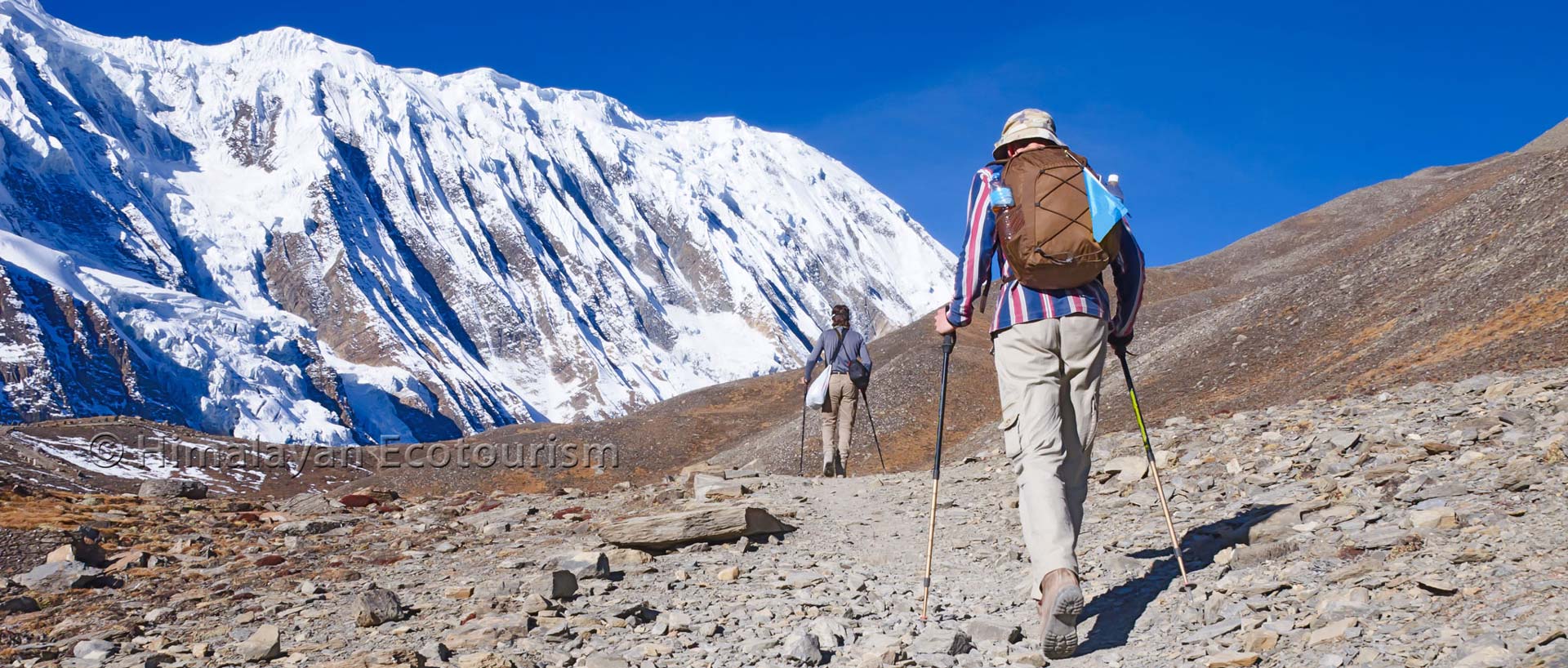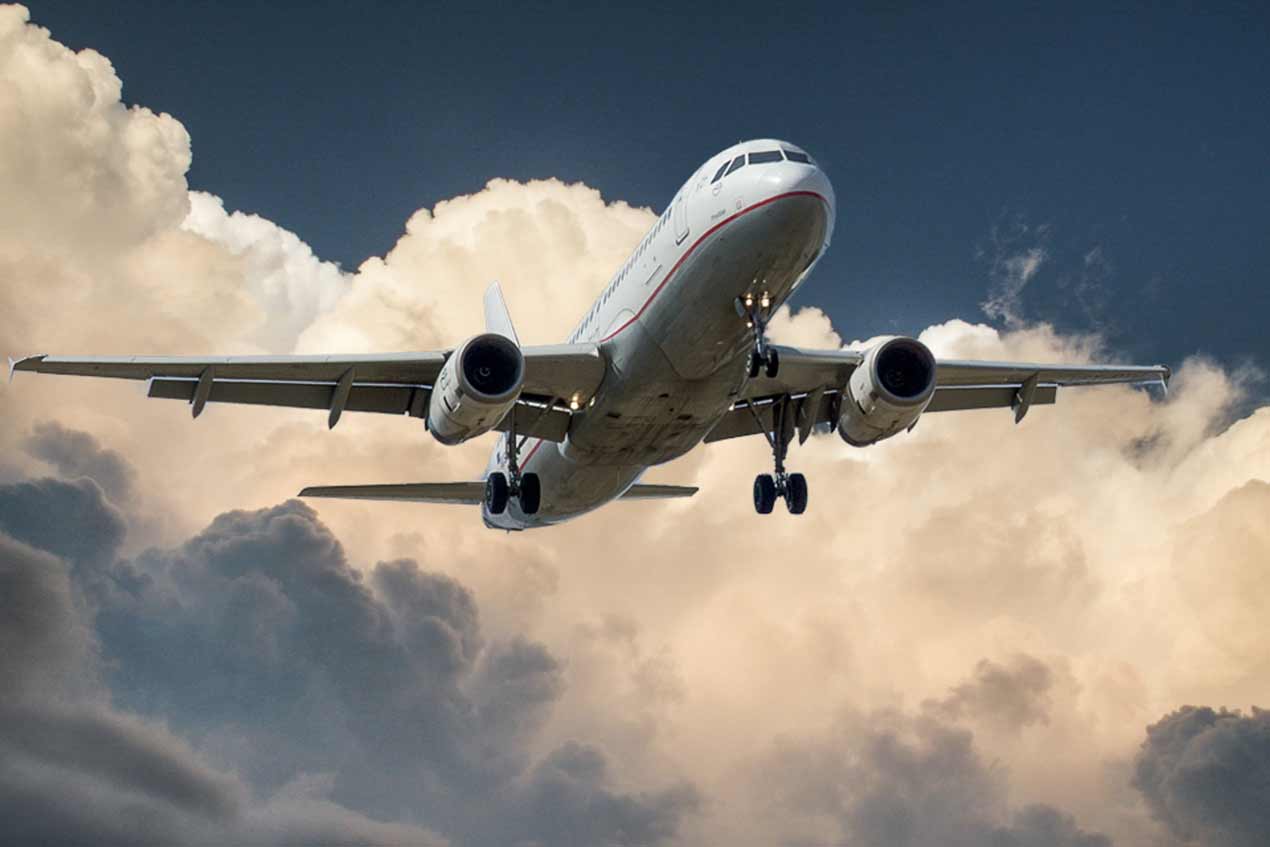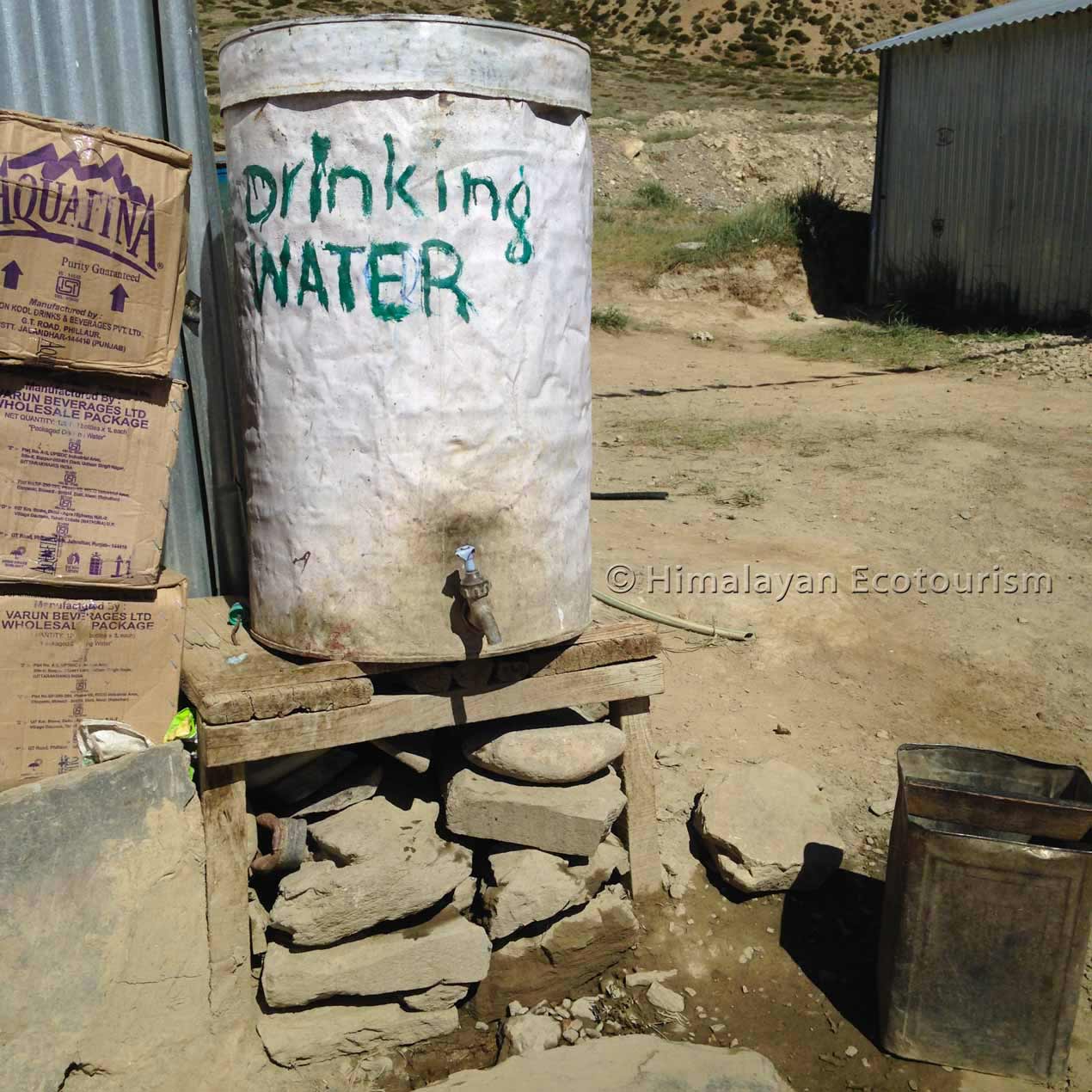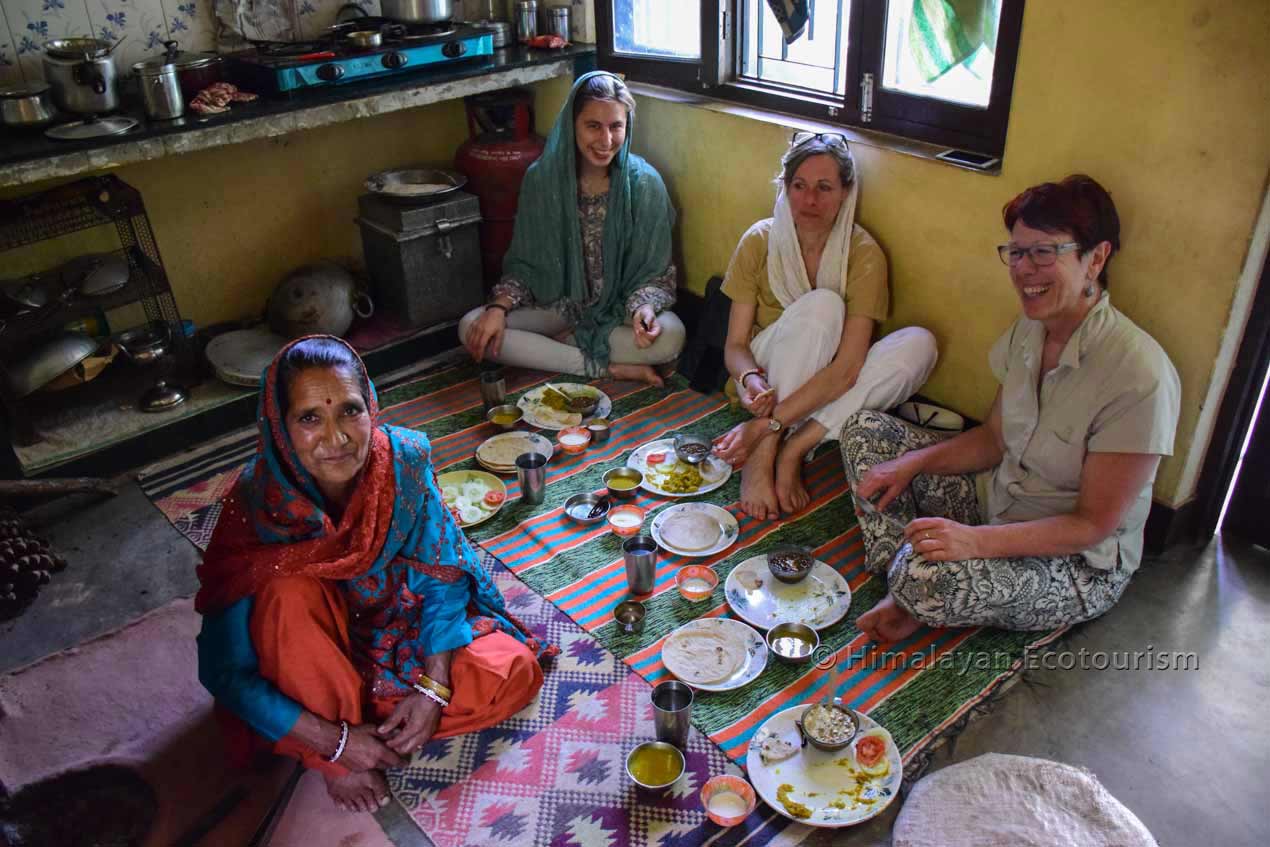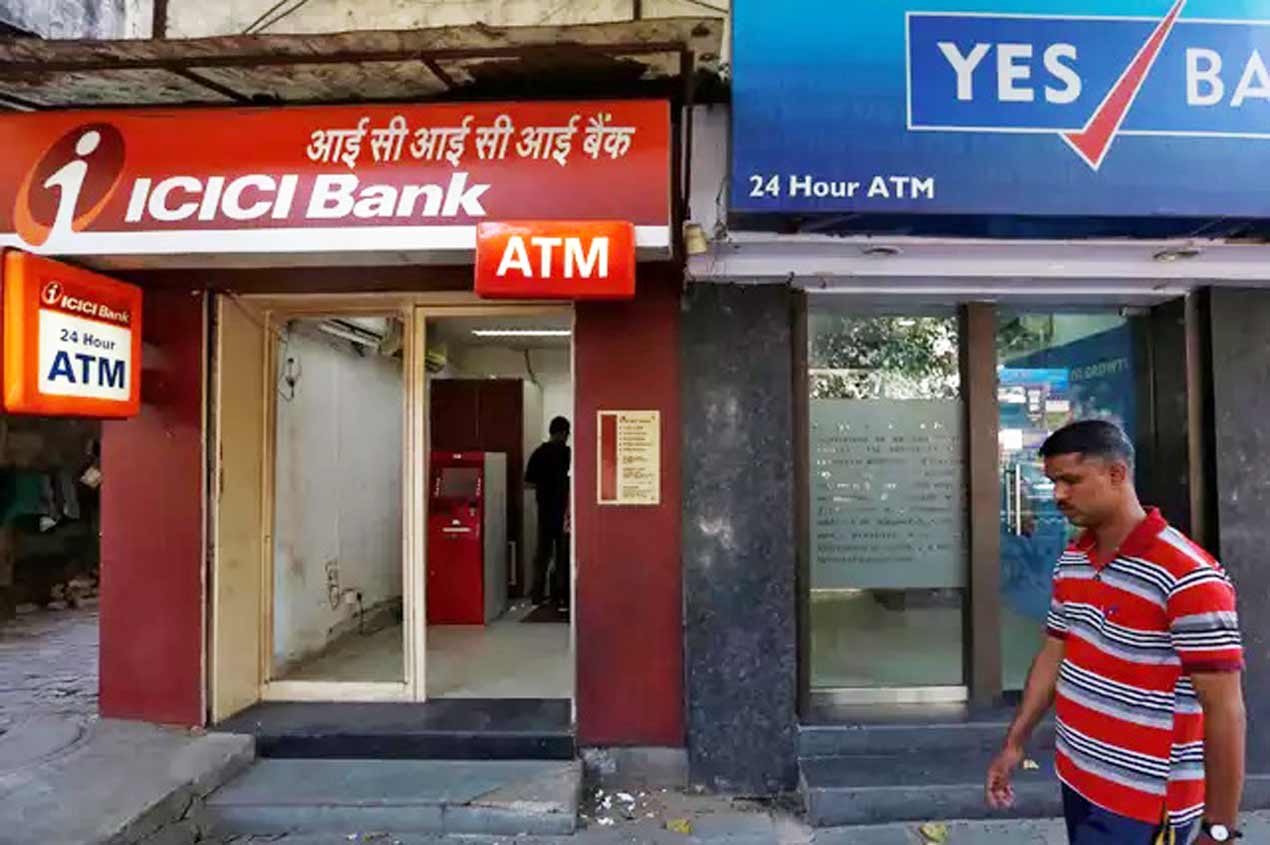Travelling to India and to the Himalayas

Read this well before you plan your trip
Most of the time, travelling to the Himalayas involves flying to India.
If it is your first time traveling to India, you may have some fear, and surely a lot of practical questions.
Here, we have answered many FAQs, which will help you be at ease before your trip.
Being well informed is crucial for a safe and comfortable journey, and that is exactly what we aim to achieve.
The page is divided into two sections : “Before departure” and “In the Himalayas with us”.
In the first section, we have provided information that you may need to prepare for your trip or things you need to think about before departure.
In the other section, we have provided all the information you may need to know while travelling to India, especially the Himalayas.
You can feel free to enquire with us if you have any further doubts.
Vaccinations for India
Compared to the rest of the country, the Himalayas pose lesser danger when it comes to disease.
However, your trip to India could be a great opportunity to get up to date with several vaccines such as the tetanus, diphtheria, whooping cough, polio and measles.
Vaccination against hepatitis A and B would also be recommended.
Malaria is certainly not something to be afraid of in the Indian Himalayan Mountains. You should, therefore not administer preventive medicines. Though the risk is very low, we still advise you to protect yourself from mosquitoes in the evenings and nights during your transit to the Himalayas (Delhi!).
This mosquito protection will also protect you from dengue fever, present in Delhi.
Any questions related to your health while travelling to India ? Seak advice from your physician or let us know !
How to get a visa for india?
To enter Indian territory, you need a visa. Be sure to have a passport whose validity exceeds by at least 6 months your date of return from India.
As you are travelling for tourism purposes, you can apply for an E-tourist visa. This is done online on the official website of the Indian government, here Indian Visa Online.
The application procedure is independent of your nationality, it is the same for everyone (with some exceptions), and therefore the online application is in English. Don’t worry, we’re here to help if you have any concerns.
There are 30-day visas, but it is more secure to take the visa valid for 1 year. The one-year visa is valid from the date of your ETA (Electronic Travel Authorization), a document that will be delivered to you by email a few days after you have applied online.
You will have to print it and take it with you to present it to immigration with your passport when you arrive in Indian territory (at the airport).
If, for example, you receive your ETA on March 21, you can travel to India until March 20 of the following year. Please note that you cannot stay in Indian territory for more than three consecutive months. If you want to stay longer, you will have to leave the territory and then come back.
Before you begin the application process, make sure you have a copy of your photo ID and a copy of the page of your passport that contains all of your information on your computer. Some instructions to follow absolutely:
For photo ID
- The photo must be in JPG format
- File size must be between 10KB and 1MB
- The photo should be square and borderless.
- Like all passport photos, it must be on a white background or a very light even color. Centered face, neutral expression, no glasses, etc.
For passport copy
- The document must be in PDF format
- File size must be between 10KB and 300 MB
To the latest news, a one-year E-tourist visa costs 40 Eur, a one-month visa costs 25 Eur.
When you are ready with your documents (photo and passport copy) and your bank card for payment, you can start the Indian Visa Online application procedure. Indian Visa Online.
You must click on the “Apply for e-visa” link in the second frame at the bottom of the page.
If you are not sure that you can answer easily, you can see the entire form here : Have a look at the form before starting.
If you feel lost, don’t worry, ask us!
International flights to India
Due to the volatile nature of airline ticket prices, we ask our travellers to buy their tickets themselves.
Despite the great distance that separates Western Europe from the Indian subcontinent (8 hrs flight in average), ticket prices are relatively democratic compared to other exotic destinations.
The same situation prevails for the flights from the US : the price per mile is quite low.
Of course, the price depends on the season you are travelling in and yes, the thumb rule applies: buy your tickets well in advance, so you do not end up paying a bomb of a price later.
Consider the ticket prices to range between 500 and 700 Euros per person (All taxes included) for a flight from Europe to Delhi, the closest airport to the Himalayas.
If you seem to face any difficulties, please do not hesitate to contact us if for any kind of assistance.
If you are travelling in a group, it would make the most sense to buy the tickets together.
ou can either contact your travel agent or ask us to make bookings for the same. You must keep in mind that it will be done at competitive rates.
Wanna book your flight with us ? Enquire now !
What to take for your trip to India?
Take the minimum!
Travelling light is always more comfortable.
If you are going to trek, you do not need to carry camping equipment as we have imported quality camping and trekking equipment from Europe. We provide tents (different for road trips and treks), sleeping bags (with cotton liners for your hygiene), comfortable self-inflating mattresses, telescopic walking poles and all the required equipment for cooking in nature.
Take only your personal belongings.
Clothing, First-Aid & Other Essentials
When it comes to clothing, try to keep it to a minimum for when you are on the mountains, you really would not require a change of outfits for every other day.
You can avail the laundry service in certain hotels but this is definitely not the case for all of our tours. If laundry is something that concerns you, ask us and we will help you find out which hotels can provide you with this service.
Bring appropriate clothing for both sunny as well as cold days. Be aware that even between July to August, temperatures can drop to a negative during the night at high altitude locations (beyond 4000 m), while daytime temperatures can go as high as 30 ° C in the same places.
A waterproof (light) and windproof rain suit would also be recommended because of the ever-changing and unpredictable weather conditions.
Speaking of pharmacy, Himalayan Ecotourism carries a First Aid Kit at all times containing the essentials. You are advised to carry your own First Aid Kit with you in case of your personal medication requirements. Some of the commonly used medicines would be Paracetamol, Loperamide against diarrhea, Domperidone against the motion sickness, an antibiotic against respiratory tract infections, an antibiotic against digestive system infections (ofloxacin or azithromycin), an anti-inflammatory cream or pills for muscles and joints, disinfectant gels. You can also purchase water disinfection pills available in pharmacies and a mosquito repellent that will always come in handy.
A torch (preferably a headlight).
A hat (or cap) and sunglasses.
Sunscreen and lip balm.
An extra pair of comfortable and compact shoes (or slippers) for the evenings shall come in handy when you least expect it.
Your toiletries should include a washcloth and a light towel.
Two passport photos and copies of your passport and visa.
Consider any other small camping gear for your comfort, although there is no need to clutter up.
For the treks
We recommend that you bring a small backpack (20 – 30 liters) for hiking days, for long treks favour a good larger backpack .
Good trekking shoes of boots.
Good and light technical clothing is preferable over simple everyday clothing to avoid feeling heavy and uncomfortable.
Health concerns
The biological environment of India being very different from the Western environment, you are likely to get the traveller’s diarrhea. To make your trip comfortable, you may bring along Loperamide in your First-Aid Kit. Although it is important not to make a phobia of it, some precautionary measures can help you avoid diarrhea:
Although it is important not to make a phobia of it, some precautionary measures can help you avoid diarrhea, an infection transmitted by food, water, objects or dirty hands :
Wash your hands regularly with soap, especially before meals. Hand sanitizers are also very effective therefore, we would definitely recommend it.
Drinking directly from the tap water would not be recommended in the city area. Make sure you have a portable water filter as it would be preferable to avoid plastic bottled water as much as possible.
Mountain water is excellent and you can drink from it without any potential risk although using a water filter will protect you entirely. If you are looking for a perfect water bottle to carry, think of bottles with an integrated filter like the Lifestraw bottles.
You can treat yourself with fresh juices every now and then, but avoid anything with ice in it.
There is no risk in cooked meals. But avoid salads the first days of your stay. Make sure to peel all your fruits.
Any further question ? Enquire now !
About your food
Indian food is varied and delicious but also spicy!
Therefore, it can be quite challenging to adjust to in the very beginning.
For those who don’t like spicy food, remember that you will get used to it in a few days’ time and start to love it before you know it.
So don’t worry, you may eat less during the first two days, but you can easily make up for it with some fruits and biscuits!
Our guide will help you as much as possible to get you food as you like it during your stay in the hotels and while you dine in restaurants.
You may have to be prepared for a small menu during certain part of your trip for you may not get a lot of variety. This may only happen if we dine at a local eating place that usually has locals going there.
Many Indian dishes are vegetarian. By default the meals are veg, but you will love the varieties of curries and vegetarian snacks ! If you want to eat meat, check the “non-veg” section of the menu, mostly chicken will be available, but sometime mutton or even fish will be in the menu.
And speaking of meals on treks, you have absolutely nothing to worry about because we always do the best we can in the wilderness
Hotels and other night stays in India
We do not select the most expensive hotels to avoid increasing the price of the tours. However, we are extremely strict about cleanliness and hygiene, which is something you may struggle with on your trip to India. Comfortable bedding, air-conditioned room when necessary, quality cuisine and hospitality from the hotel managers are some things that we never compromise with when looking to stay in Hotels.
The same criteria is kept in mind while selecting homestays. However, we obviously cannot be as rigorous as we would be with traditional hotels. Living the local way may come with its own set of compromises.
In the description of the different tours you will see 4 categories of hotels :
Cat. A : Luxury hotels, 4 or 5 stars hotels. There are usually not planned in the proposed tours. Enquire with us if you want to enjoy luxury in some places.
Cat. B : That will be our choice in the cities like Delhi, Shimla, Manali or even Leh in Ladakh. Very comfortable stay, with a good choice of food, room service, laundry service, etc. Boutique hotels and guesthouses also come in this category.
Cat C : You will have the basics but in a local style. We can still guarantee your hygiene in this category. Don’t expect luxury here, but a good night in a more authentic environment.
Cat D : Mostly the real homestay in secluded areas. The good points here are the hospitality of the local families and the real experience of living like a local. Here, you may have to compromise on your comfort. Beds are very simple, rooms without artifice, and the washrooms are not attached to the bedroom, sometimes common. You may have to take your morning bath on the floor with a bucket and a jug.
Camp : Camping happens mostly on the treks, but sometimes on a tour with a vehicle as well. You know what camping is, right ? But don’t worry we make it as comfortable as we can with excellent camping equipment. Himalayan Ectourism is reputed for its comfortable camps and bivouacs.
Any further question ? Enquire now !
Altitude sickness
Many of our tours involve stays at high elevations, so you may probably experience mild altitude sickness.
To reduce the discomfort associated with altitude, all our circuits are organized so that you climb gradually with comfort on a high altitude.
For instance, while many operators make the Delhi- Leh journey in two days / one night, we do it in a minimum of three days / two nights.
This helps the travellers to get acclimatized with the altitude. Even when planning the trip this way, you may experience mild altitude sickness. There is a drug that greatly reduces the risk of altitude sickness i.e. Diamox.
We will leave it up to you whether to use it or not.
On your request, we will make it available to you upon your arrival in Delhi at the pharmacy price.
Ask your doctor for advice.
Do you want an advice from our montain specialist doctor ? Enquire now !
On the road
Your commute will take place in vehicles that are adapted to the Himalayan terrain. The vehicles are comfortable, reliable and well maintained.
The drivers are selected based on the quality of their driving (prudence and skill) and their experience.
We generally use either a Toyota Innova (up to 4 passengers) or a Force Traveler (up to 10 passengers).
For motorcycle safaris (or bike tours), we select the best suppliers.
The motorcycles are new Royal Enfields. We give you a choice of the RE Classic 500cc or the RE Himalayan 410cc.
A mechanic accompanies the group to help out in case something goes wrong.
Any further question ? Enquire now !
Cultural aspects
Whether you are a long time backpacker or it is your first big trip, the first landing in India always comes as a “shock”.
Having been immersed in Western culture and in well “disciplined” environments, the Eastern culture and the very “crowded” environment of Delhi (especially Old Delhi) will surprise you.
Don’t worry, a French-speaking guide will meet you at the airport, but there are a few things that you must know:
You may come across motorists and motorcyclists that drive dangerously and very aggressively. Do not expect any courtesy, just be patient and move carefully when walking on the street. Moreover, try to not mingle with the rash drivers and avoid arguing as much as possible.
Although in the cities of India, women dress as they wish, this is certainly not the case in the remote corners of the country, including the villages in the Himalayas. There aren’t any restrictions as such for men’s clothing, but women must try and avoid anything that exposes too much skin. You could probably use your visit to India as an excuse to try the traditional Indian clothing which can be comfortable as well as appropriate. You will certainly find many ready-to-wear women’s clothing on your visit to Delhi. Just ask your guide and he will help you.
In the depths of the Himalayas, human experiences are extremely rich and spontaneous. Unfortunately, this is not the case in the tourist areas of large cities. If someone approaches you too frankly for any reason and he insists, beware, he certainly has something in his mind that is better to avoid. Decline his proposals.
Homeless individuals asking for money can often be spotted on the plains of northern India, but do not encourage it. Apart from a tip that you can give to your support team at the end of your stay, avoid giving money to the homeless, rather offer food. On the other hand, by travelling with Himalayan Ecotourism you support several social and environmental programs that are carried out with dignity and in a sustainable manner.
Whether you like it or not, haggling is part of most shopping spree. Do not hesitate to negotiate prices. We will never take you to shops where we earn commissions. We will guide you to safe shops, on your request.
When you are living in a homestay or when you are asked to come into rural houses, be humble and respectful. Follow the advice of your guide. Take off your shoes at the entrance. Different marks of respect must be shown to different family members and you will not be able to access certain areas of the house.
In homestays, you will eat most meals on the floor, uncovered, with your right hand. Avoid using your left hand. Wash your hands well before and after the meal. Be careful where you put your feet, as it may be considered disrespectful to some locals.
Photography
Taking photographs is obviously an important part of travelling today. Afterall, it is what we take back with us, so we can look back at it in the future.
Although the locals are used to seeing cameras and other picture-taking devices, it is still a recent phenomenon in rural India and therefore, you need to be careful before clicking.
Opportunities to take photos and record videos are endless in India.
But we kindly request you to feel the atmosphere before taking a photo or a video.
Take time to be with the people before “shooting” them. Take photos after developing a relationship with them so they are not uncomfortable.
You must also know that taking photos or videos for a professional purpose may involve asking for permission, especially in restricted areas of in National Parks.
Any further question ? Enquire now !
About money
A long time ago, dozens of exchange offices lined up in all the tourist places of India.
With the proliferation of ATMs and the almost generalized acceptance of credit cards and even some debit cards (Maestro), it becomes almost useless to take your currency to change into rupees.
Visa and Mastercard credit cards are widely accepted in ATMs and you will get an attractive exchange rate.
You can withdraw up to 10,000 rupees (INR) at a time, and you can withdraw twice a day, making a total of up to 20,000 INR per day.
It would make the most sense to withdraw a large sum (10,000) than several small sums because it costs you around 5 euros/USD for each transaction.
ATMs are available at the arrival lounge of the Delhi airport. So, you can get rupees right after landing.



